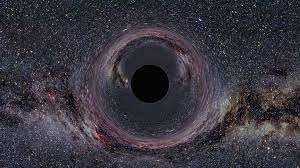Unveiling the Enigma: Exploring the Milky Way’s Supermassive Black Hole

The Milky Way, our celestial home, harbors a cosmic marvel at its core – a supermassive black hole known as Sagittarius A* (Sgr A*). Situated approximately 26,000 light-years away from Earth, Sgr A* captivates astronomers and astrophysicists alike, offering a window into the enigmatic nature of these gravitational behemoths. In this exploration, we embark on a journey to unravel the mysteries surrounding Sgr A*, delving into its origins, characteristics, and profound implications for our understanding of the cosmos.
A Cosmic Powerhouse Unveiled
Discovered through decades of meticulous observation and analysis, Sgr A* stands as a testament to the immense gravitational forces that govern our galaxy. Despite its formidable presence, Sgr A* remains shrouded in darkness, its existence inferred primarily through the motion of surrounding stars and interstellar gas clouds. This celestial colossus boasts a mass equivalent to roughly 4 million times that of our sun, exerting an irresistible pull on anything that ventures too close.
The Origins of Sgr A*
The genesis of Sgr A* traces back to the turbulent infancy of the Milky Way, a time when vast clouds of gas and dust coalesced under the relentless pull of gravity. Over eons, these primordial building blocks gradually collapsed, giving rise to the first generation of stars and stellar remnants. Among them, massive stars burned brightly before succumbing to cataclysmic supernova explosions, leaving behind dense stellar corpses known as black holes.
As these black holes congregated at the galactic center, a process of accretion ensued, wherein surrounding matter spiraled inward, fueling their insatiable appetite. Over millennia, the relentless accretion of gas, dust, and stellar debris transformed one such black hole into the gravitational powerhouse we now know as Sgr A*.
Probing the Depths of Darkness
Despite its name, a black hole’s presence is often betrayed by the luminous phenomena that accompany its voracious appetite. In the case of Sgr A*, astronomers have detected a torrent of radiation emanating from its vicinity, generated by the intense friction and gravitational interactions occurring within its accretion disk. This radiation spans the electromagnetic spectrum, from radio waves to X-rays, offering invaluable insights into the conditions prevailing near the event horizon—the point of no return.
The Dance of Stars
One of the most compelling lines of evidence for Sgr A*’s existence stems from the mesmerizing dance of stars that orbit its gravitational epicenter. Through precise measurements conducted over decades, astronomers have mapped the trajectories of these stellar companions, revealing their erratic motions as they succumb to the gravitational pull of an unseen mass. These observations provide compelling evidence for the presence of a supermassive black hole at the heart of our galaxy, exerting its influence over the cosmic ballet unfolding within its domain.
The Role of Sgr A* in Galactic Evolution
Beyond its intrinsic fascination, Sgr A* plays a pivotal role in shaping the evolution of the Milky Way and its inhabitants. The gravitational interactions orchestrated by this cosmic behemoth govern the dynamics of stellar populations, influencing the formation and dispersal of star clusters and the distribution of interstellar gas and dust. Moreover, the energetic outflows and radiation emitted by Sgr A* have profound implications for the habitability of surrounding regions, potentially sculpting the conditions necessary for life to emerge and thrive.
Peering into the Abyss
Despite decades of observation and theoretical modeling, many mysteries surrounding Sgr A* persist, challenging our current understanding of black hole physics and galactic dynamics. Key questions remain unanswered, from the precise mechanisms governing its accretion disk to the nature of the exotic phenomena occurring near its event horizon.
To unravel these enigmas, astronomers continue to push the boundaries of observational technology, harnessing the power of cutting-edge instruments such as the Event Horizon Telescope (EHT). By coordinating observations from telescopes around the globe, the EHT aims to capture the first-ever image of a black hole’s event horizon, offering a glimpse into the depths of darkness that shroud these cosmic anomalies.
Conclusion: A Cosmic Conundrum
In conclusion, Sgr A* stands as a testament to the awe-inspiring forces that govern the cosmos, challenging our understanding of space, time, and gravity. As we continue to probe the depths of darkness at the heart of the Milky Way, we embark on a journey of discovery that promises to reshape our perception of the universe and our place within it.





